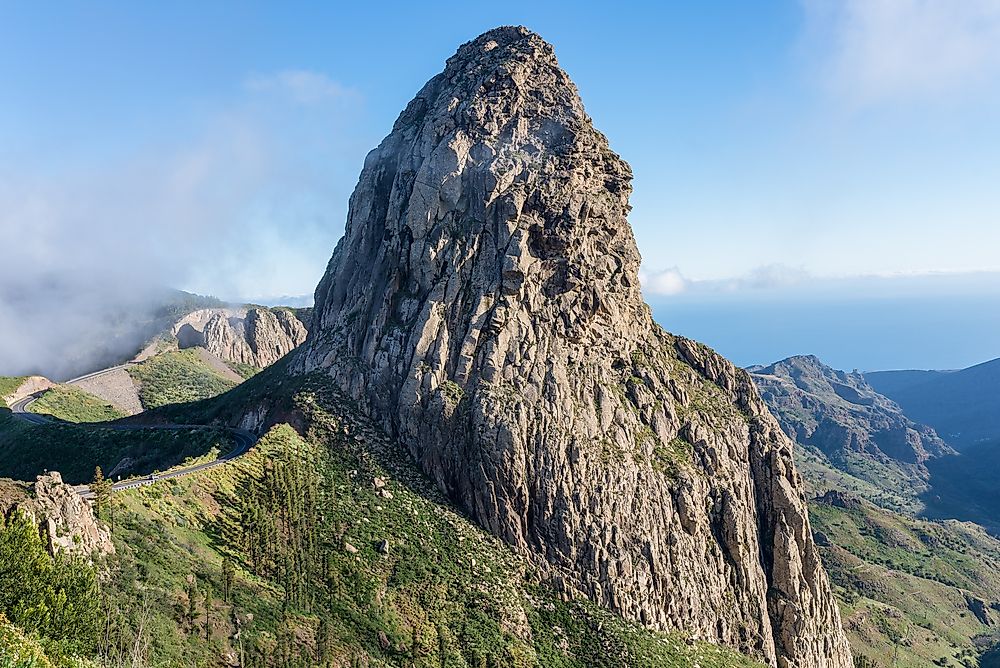What Is A Volcanic Plug?

A volcanic plug or volcanic neck is a geographical formation that occurs when lava cools inside a vent of an active volcano, and the connecting deposit is eroded away. During formation of a plug, an explosive eruption can take place if rising impulsive-charged magma is trapped beneath a plug. A distinctive landform is formed if a plug is conserved because the erosion-resistant plug remains after the adjoining rock has eroded.
Structure Of A Volcanic Plug
Solid magma, fragmental wall rock, and volcanic materials are conserved after termination of the volcanic activity. They are stored in the pipe of the volcano. The igneous material in a plug may have a composition that may be related to that of lava or ash. However, its composition may comprise sediments of denser, rougher grained rocks, which are rich in magnesium and iron. Volcanic plugs entail a body of lava that could either be in liquid or solid form. Plugs are perceived to have the shape of a funnel and to narrow down into bodies stretched out to dyke-like forms.
Examples Of Volcanic Plugs
There are unique examples of volcanic plugs around the world, including the Devil’s Tower in Wyoming, United States. The Devil’s Tower is among the first volcanic plug to receive recognition as United States’ national monument. It extends to a height of 386 meters. Other volcanic plugs are the Gros Piton and Petit Piton which are known as Pitons of Saint Lucia. These volcanic plugs are 771 and 743 meters high respectively.
Ailsa Craig in Scotland is another volcanic plug that is 340 meters above the water of the outer bay of Clyde. The volcanic plug serves as a landmark for the location of an old volcano that was active around 500 million years ago. On the other hand, Morro Rock that is situated in California is ancient round shaped volcano plug with a height of 177 meters. It is sometimes known as the Seven Sisters or the Nine Morros.
Another example of an ancient volcanic plug is Kapsiki Peak in Cameroon. It is located in the Northern region of the country near Rhumsiki Village. Kapsiki Peak is a sharply eroded volcanic pug that is among the tallest (1,224 meters long) volcanic plugs in the globe. The structure of Kapsiki Peak is phallic and fascinates visitors. Sigiriya Rock Fortress, 370 meters high, is also a volcanic plug found in Sri Lanka. The plug resembles a mushroom because of its shape that was brought about by erosion.
Ship Rock in New Mexico is another volcanic plug that is a pointed remain of a prehistoric volcano. The plug is 482.5 meters high and is situated on the grounds that have gradually eroded. The lava that led to the formation of the Ship Rock started cooling about 27 million years ago. Lastly, Trosky Castle, which is located in the Czech Republic, is a volcanic plug that has a pair of basalt volcanic plugs. The basalt volcanic plugs are the Tall Baba and Tall Panna with the heights of 47 and 57 meters high respectively.











